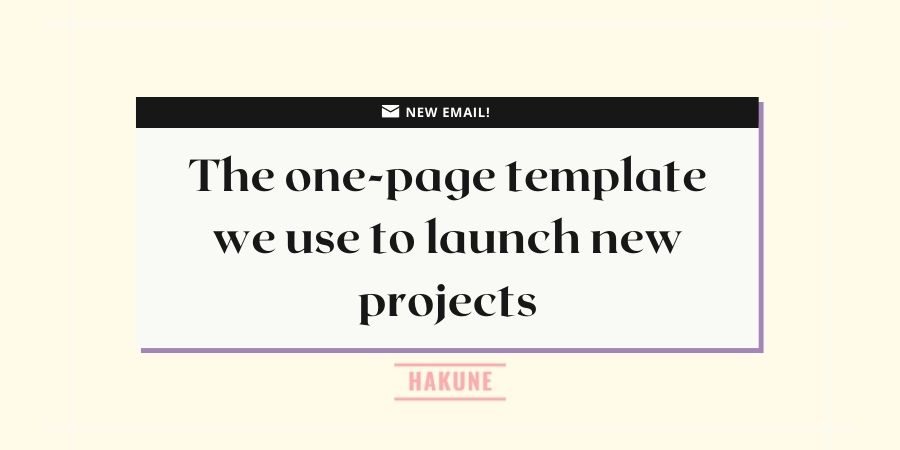The Method Episode #28

Moves To Make In A Recession
TL.DR: The Wall Street bear market is now trickling down to Main street, so we’re pivoting to recession-proof clients and keeping an eye out for A+ talent.
Since November, our financial markets have declined, and now we’re seeing this filter through to the real economy.
It feels like we’re on the brink of a recession.
Market conditions affect capital flows, and as a result, our tech-based clients, who rely on fund-raising, are suffering.
We’re starting to see many of our clients fall behind on their bills. We have several accounts that are 60+ days in arrears, some even 120. Due to debtors, our revenue is down 40% just this month.
So we’ve been thinking about how to navigate these next few months or Years; Till we see good times again.
My first thought is that we need to serve a broader range of clients and shift some of our business away from tech. Ideally, these clients will work in relatively recession-proof industries and perhaps did well during 08/09.
I’ve also started to see layoffs in tech and heard through my grapevine of a few talented peeps looking to jump ships. So there’s an opportunity for us to pick up some A+ players at compensation rates we can afford.
As long as we can operate through this chaos in profit and pick up some new clients and talent, we should be able to come out of this thing much stronger.
Key Takeaway:
1. Reduce OPEX and stay in the game long enough for your fortunes to swing upward again.
2. Find new clients based on industries and companies that thrived during the last recession.

The One Page Project Launch Template
TL.DR – A walkthrough of a one-page template I use when starting new jobs and projects.
Before I kick off new jobs, I like to clarify my thoughts with a launch document.
The point is to give me some boundaries to work between and a finish line to aim for. Without those, my projects are prone to creep, and my original intentions morph into something completely different.
It’s a one-page doc that doesn’t need more than an hour of thought or 300 words to fill in.
There are 5 sections
1. Why
2. What
3. What-not
4. How
5. Next
Why I’m Doing This
First, I outline why I’m doing the job with a few short descriptive sentences.
Like
“We need to revamp our Tribe membership because our revenue is declining, and soon it’ll be costing us money to run. After a lot of effort, we haven’t been able to turn this thing around, so we need to do something different.”
One clear reason is best – I’ve found that I end up doing it for nothing when I do something for many reasons.
What I Want To Happen
Here I state what I’d like to specifically achieve in one sentence.
Vague statements like “I want to launch a newsletter” are useless. This goal post is too easy to extend or dampen when things change.
Instead, be specific so the outcome isn’t malleable and it’s clear whether you’ve achieved it or not.
“I want to launch a newsletter read by 10,000 kiwi business builders by 2023.”
I can’t fake this; I’ve either achieved it or haven’t.
What I Don’t Want To Happen
My jobs need boundaries so I don’t end up in the Sahara looking for water, and limitations force creativity.
I draw these lines by laying out specific things I don’t want to happen. Such as:
“I won’t spend more than $250 or 5 hours per week making this happen.”
“I won’t let this new project negatively impact any ongoing work.”
“I won’t continue the project past June If I’m not enjoying the work.”
How It Will Happen
This is my back-of-the-napkin strategy. I bullet-point a few general actions I think I’ll need to take.
Stay away from the weeds here – that can come later.
Also, try not to carry any assumptions into this equation. Basically, look at every project like a curious newbie.
• Publish the newsletter weekly with all original content about building businesses from my perspective.
• Write the stuff I would have found useful three years ago
• Ask for feedback to learn what’s good and what’s shit
Where Do I Start
What can I do right now that will build a little momentum in the right direction?
I like to keep my first action outcome-based. So rather than ‘research how to write a newsletter, it was ‘create a newsletter template‘.
I’ll figure out the rest later.
Key Takeaway: Define new jobs with a one-pager so you have a map to work from; otherwise, we tend to get lost and lose sight of why we started.
“The earth provides enough to satisfy every man’s needs but not every man’s greed.”
~ Mahatma Gandhi
Where We’re Learning
• The Big Short -> A fun movie to watch highlighting some of the absurd behavior and red flags that preceded the last financial crisis (Hint you can find this on dopebox.to)
• Default Alive-> A classic Paul Graham (Y-Combinator Founder) essay talked about on the interwebs lately that discusses what it means to be default alive or default dead. Hint – when capital markets tighten you want your business to be default alive.
• Podup Newsletter -> A weekly newsletter that describes itself as the blinkist for business podcasts. They cover many of my goto podcasts and save me a few hours of listening time each week.

Faking It Till You Make It
TL.DR A rant about why I think faking it is a waste of time for long-term players.
I’m not a fan of faking it till you make it, and here’s why.
First, faking it obviously exists on a scale; we all fake it to some degree. I’m referring to the type of faking it that requires energy and a sharp memory to upkeep.
So say you’re doing this faking thing and trying to spark up a new business relationship. Maybe you exaggerate a few line items on your verbal CV or drop a few names that you only know as names.
And you make it past that vague feeling-out process and get invited round for a BBQ or maybe a dinner with your partners. The deals are not done yet, but you’re close…
The exact moment you and the other party get to know each other – when the relationship should prosper. It unravels.
Those exaggerations are slowly exposed as BS, and you lose trust.
If the relationship is purely transactional, then perhaps that is fine. But in my mind, that’s not a relationship at all – it’s just a contract.
Faking it is short-term positive, long-term worthless.
As the great Nathan Diaz says, Be real.
Key Takeaway: You can fake your way through a transaction, but not a relationship.


